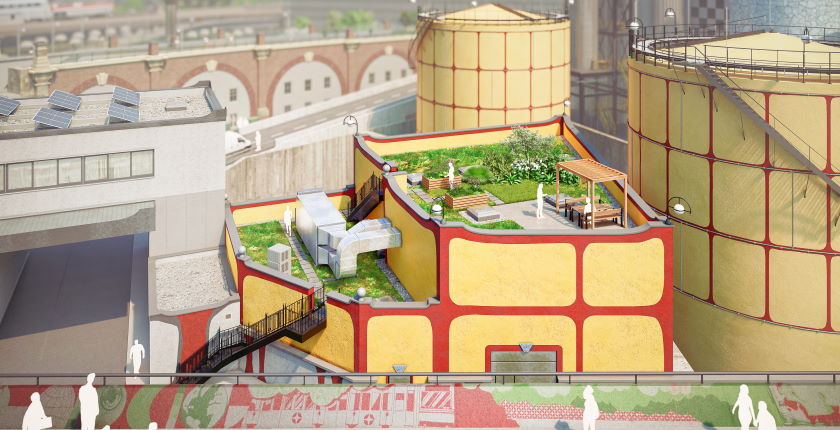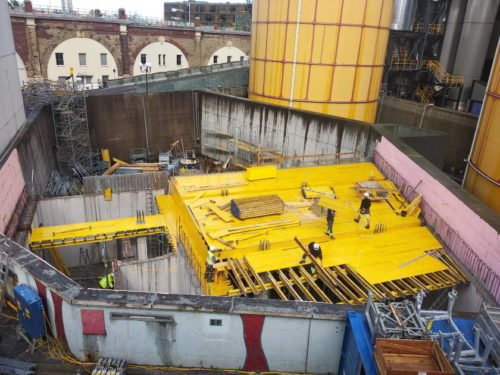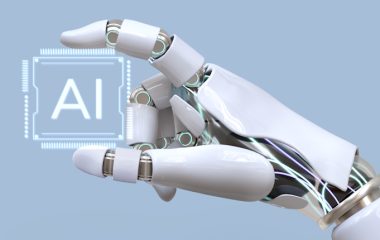
Photo: Wien Energie
Wien Energie is installing two reservoirs to heat water with electricity from the grid at times of slow demand – so no wind power is wasted – and distribute it directly into the district heating network in Vienna.
Next to the famous Spittelau waste incineration plant in Vienna, Wien Energie is building a power-to-heat system. It will convert excess green electricity from the grid into heat. The facility will ensure that energy isn’t wasted and help grid stability.
The system is scheduled to enter into operation next spring. The city-controlled power, gas and heating supplier is building it at a site where two oil tanks used to stand. They will be replaced by two reservoirs with heaters of 5 MW each, which are mostly intended for the utilization of renewable energy.
The two heaters will have the capacity of 5 MW each
“Systems such as the new power-to-heat system are of particular importance for climate protection. When strong winds blow, for example, wind turbines often generate more energy than is needed at the moment. With our system, we will be able to absorb this excess electricity at the push of a button and convert it into heat, store it and distribute it,” said General Manager of Wien Energie Michael Strebl.
When there is surplus energy in the grid, Austria’s transmission system operator APG will inform the local company to activate the facility, which will heat water to 155 degrees Celsius. It will be fed directly into the district heating network.

Future is in integration
Dušan Macura, head of production and distribution at the Novi Sad District Heating Co. in Serbia, told Balkan Green Energy News that with the expansion of renewables, it is the only possible concept. “The electricity system must be integrated with the gas and district heating systems to minimize expenses by using excess power. Most of the unused energy can be taken at night from wind farms, and it can be especially useful in the winter, for covering a night load or to accumulate heat in the district heating network,” he said.
There is available technology and software to automatically buy electricity when market prices are low, instead of using gas, he stressed and added it is a way to avoid halting a part of wind power plant capacity at times when the electricity system can’t take in energy from them.
District heating companies and their users can achieve great benefits if surplus power at times of low demand is converted to be used for heating
Facilities such as the one under construction in Austria’s capital city store excess electricity in the form of heat. It is especially useful for district heating companies early in the morning, when they can use the excess electricity that they accumulated in the network during the night to cover the morning peak, when they switch from the night mode to the daily heating mode, Macura noted.
It is also one of the possibilities for the future of district heating in Novi Sad, Serbia’s second-largest city, he said. The pre-feasibility study has already been conducted for the use of a solar thermal system with a seasonal heat storage unit. It is much easier and cheaper to store heat than electricity, according to Macura.
Honoring Hundertwasser
The building of the Spittelau waste incinerator, designed by Friedensreich Hundertwasser, is one of the most important landmarks in Vienna. Wien Energie said that in cooperation with the Hundertwasser Foundation it would match the architecture of the new power-to-heat system and use recycled concrete and other construction waste.
The roof will be covered with greenery and employees will be able to plant vegetables and herbs there. Wien Energie already built a similar system in 2017 in Leopoldau.









Be the first one to comment on this article.